|
This summer, Schacht Spindle released the Cricket Quartet, an attachment that converts their Cricket rigid heddle loom into a 4-shaft table loom. The claim is that the Quartet allows you to switch back and forth at will between a rigid heddle loom and a 4-shaft loom. At $450, this is pretty expensive, considering you also need to have the Cricket, which is currently running around $240. So all in, this would cost $700, which is a lot for a table loom. (For comparison, a used 4-shaft table loom in working condition should be around $400).
However, I already had a 15" Cricket rigid heddle loom that I used to use for teaching and demonstrations. I enjoy using it, but I knew I would use a 4-shaft table loom more. We recently moved, and my weaving space is much smaller than it used to be, so space is at a premium. Gone are my days of acquiring looms just for fun! After looking at used table looms on Craigslist, Facebook Marketplace, and Ravelry, I realized that I had already had some experience with a lot of the looms out there, and found them to be too big, too loud, or too flimsy. So I decided to give the Cricket Quartet a try. As always, Schacht does a really nice job of packaging with minimal waste, while still protecting everything inside. Soon I will be putting the loom together and using it - I'll be sure to report back! Lately, I've been working on a project that makes use of a gradient. This is to be a sweater quantity with most of the yarn in the darkest color. I started with several piles of color - most of it the mauve/magenta color shown at the top of the first photo. Then I blended it into a gradient, adding darker and and darker values on one end, until I got to the almost-black-purple, and lighter and lighter values on the other end, until I got to the pale lilac-pink. When I took the photo above, I realized there were a couple of places where I wanted to to smooth out the gradient, specifically at the lightest and darkest ends of the spectrum. So there are a couple more values in the gradient now! The fiber is mostly organic Polwarth, with a little bit of Merino and CVM in there too. I used the diz in the Spinner's Ultimate Multitool to pull the roving off the drum carder. Now I'm using the WPI gauge to make sure I spin to about 28 wraps per inch. I'm doing this as a short forward draw, which is a little bit outside my comfort zone, so I make sure to check pretty frequently! I'm starting with the darkest color. There's about 20 ounces of this, and then between 2-4 ounces of each of the other colors, so there should be plenty for the sweater I have in mind!
One of the most fun parts of my job is spinning up samples of fiber so people can have an idea of what it might look like once it's spun. (Of course, there are many, many ways to spin a braid - each of my samples is just one possibility!) This sample is Hush, spun from merino fiber. It's also available on Falkland fiber. For this sample, I stripped the braid into narrow sections of top, and spun my singles to between 48-56 wraps per inch, using my Ultimate Spinner's Multitool. After plying, a washing, and a light "thwacking," the two-ply fluffed up to about 22 wraps per inch. I have about 600 yards of this two-ply. I had a lot of singles left on one bobbin. Sometimes it's fun to try different plying techniques, so for this mini-skein, I spiral-plied my singles with a gray commercial laceweight merino yarn. There are about 80 yards of this one, and I look forward to playing with the texture in my weaving!
Like lots of projects, I started Jillian Moreno's sample along with lots of enthusiasm, and then got sidetracked close to the end. But, I've finally finished, and have the results to share. I started with one of my 6-ounce braids, using Monsoon Sunset in Polwarth, dividing it into four sections. Since most braids are 4 ounces, my 6-ounce braid gave me a little extra to work with in sampling. First up was "as it comes," where you spin without manipulating color in any way. For this colorway, which has very long repeats, this resulted in a long self-striping sequence. As I'd already spun and knit a cowl from Monsoon Sunset using this technique, this was the most predictable of my four samples. The next technique was "flipped." At the outset of the sample along, I'd assumed that this would get me the same results as the first sample. However, Jillian Moreno has an ingenious solution for spinning "flipped" when the color repeats are symmetrical - she simply starts at a different point in the color progression. This sample resulted in an overall more tweedy/marled look, but still kept the long repeats. The third sample sample used the fractal spinning technique. Fractals are really fun to play with, and blend long color repeats in one ply with shorter color repeats in the second ply. You can see that effect here, as the swatch represents a long color repeat of orange, and is plied with shorter repeats of the other colors in the braid. The final sample was "drafted together," also known as "combo drafting." In this technique, you hold two sections of differently colored fiber together while spinning. This results in at least two colors of fiber in the single, and four or more colors of fiber being possible in the plied yarn. I found it to be the most difficult to spin, as one piece of roving tends to want to be spun at a time, and it's hard to make two play along! This was helped a little bit by pre-drafting the fibers together. Because of all this color play, there's lots more blending happening in this yarn, and it had the most surprising swatch. It still has some long repeats of color, but an overall tweedy effect. All in all, the sample along was a lot of fun! I've created some laser tags to go with the samples and swatches, and they'll be on display at my upcoming shows this year. Be sure to stop by and check them out!
Jillian Moreno is hosting an informal sample-along on her blog and on Instagram under the hashtag #samplealong. I can't recommend her book Yarnitecture enough, and I even had the opportunity to take her Yarnitecture workshop several years ago. During the workshop, we spent a whole day sampling different ways of spinning yarn. It was like a playdate for spinners! So often, we feel like we don't have time to play with our fiber before we get down to the business of spinning. We feel like we can't "waste" fiber, especially if it's something special. The irony is that if we take time to sample before starting a big project, we'll make better choices instead of diving headfirst into a project and then realizing that we should have done it differently. (But only after there's no turning back.) The first step in the sample along is preparing your fiber. I've chosen to spin Monsoon Sunset in Polwarth. Last year, I spun Monsoon Sunset as a self-striping colorway for a cowl, but always wondered what it would look like spun up with different color manipulation techniques. This sample-along is the perfect opportunity to find out! Plus, I haven't spun Polwarth wool since I began spinning, so this is a great opportunity to try a different base. An important step in choosing how you will spin your fiber is to look at the length of your color repeats. Jillian Moreno suggests trying to lay the fiber out like the dyer might have during the dyeing stage. Above you can see how I apply dye to get long color repeats in my fiber. This is one of the longest color repeats of all my fiber - so long I couldn't get it all in the frame! This fiber is relatively fresh from the dyepot, so it hasn't had a chance to get too compacted. Plus, I work very hard to make sure my fiber doesn't felt at all during the dye process, so basically I just needed to unbraid it. If your fiber is a little compacted, this is a great post on how to gently open up a braid of fiber. From there, it was time to divide the braid lengthwise into four long strips. Most braids weigh four ounces, but I dye 6-ounce braids to give plenty of opportunity to sample or spin a few extra yards. Each of my four sections weighs between 1.4 and 1.6 ounces, which I'm hoping will give me enough yarn to have a sample skein and a decent sized swatch of each sample style.
The spinning styles Jillian Moreno is sampling are:
Because of the way the colors repeat in this braid, "flipped" will result in a very similar yarn to "as it comes," so I'll be thinking of a different way to play with the color for that one. While we're supposed to spin our default yarn, the yarn that we spin when we sit down and don't think about what we're going to do, Jillian recommends a heavy-fingering or thicker yarn, which is slightly thicker than my default, so I'll be working with my Spinner's Multitool to keep a consistently thicker yarn. Now that my fiber's ready to go, I just have to get my wheel ready! |
Archives
January 2024
Categories
All
This website uses marketing and tracking technologies. Opting out of this will opt you out of all cookies, except for those needed to run the website. Note that some products may not work as well without tracking cookies. Opt Out of Cookies |

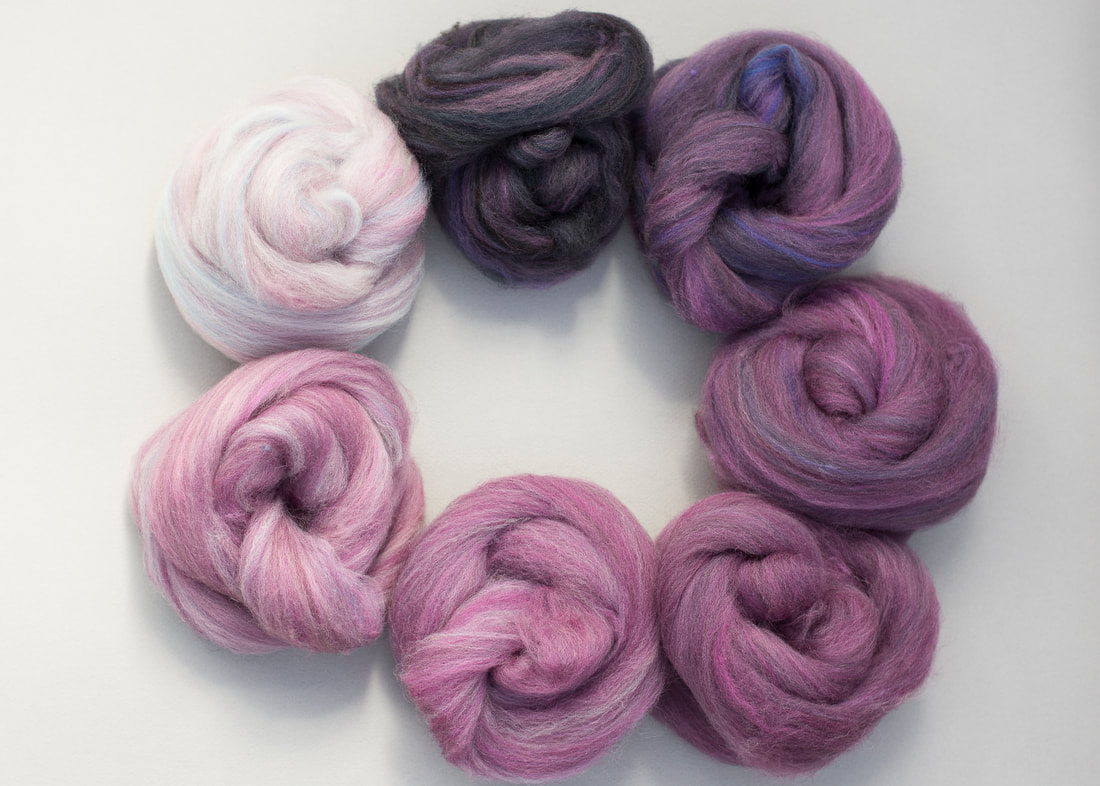
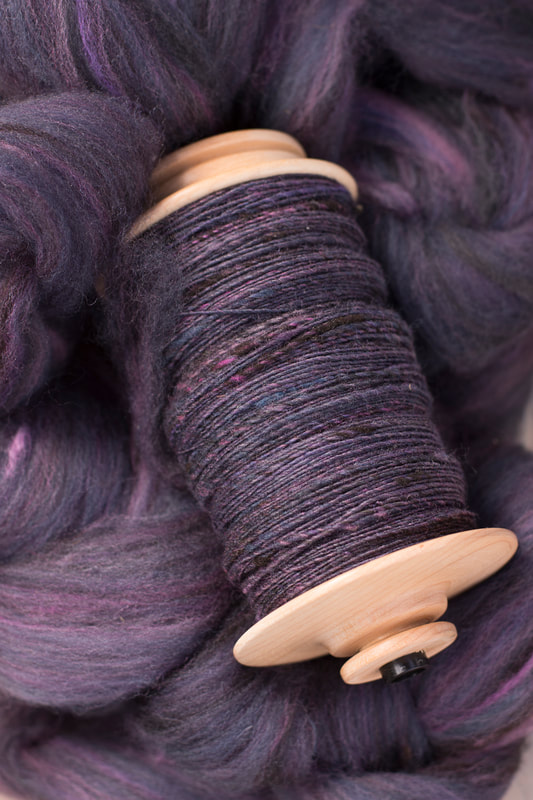
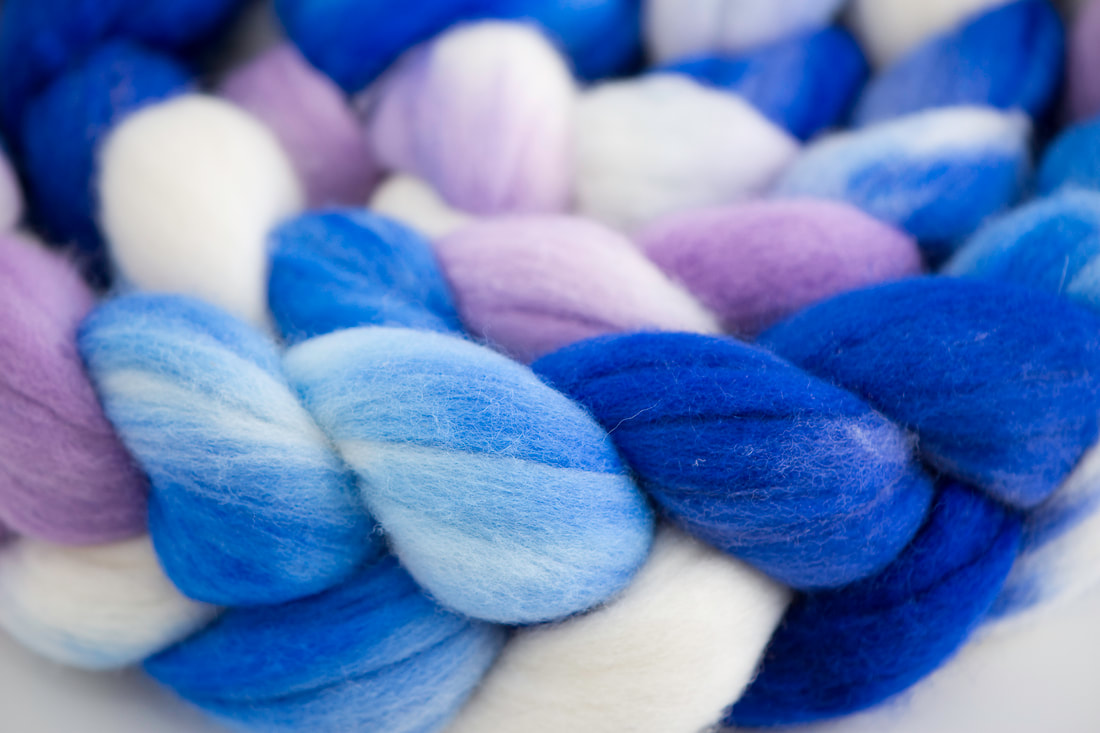
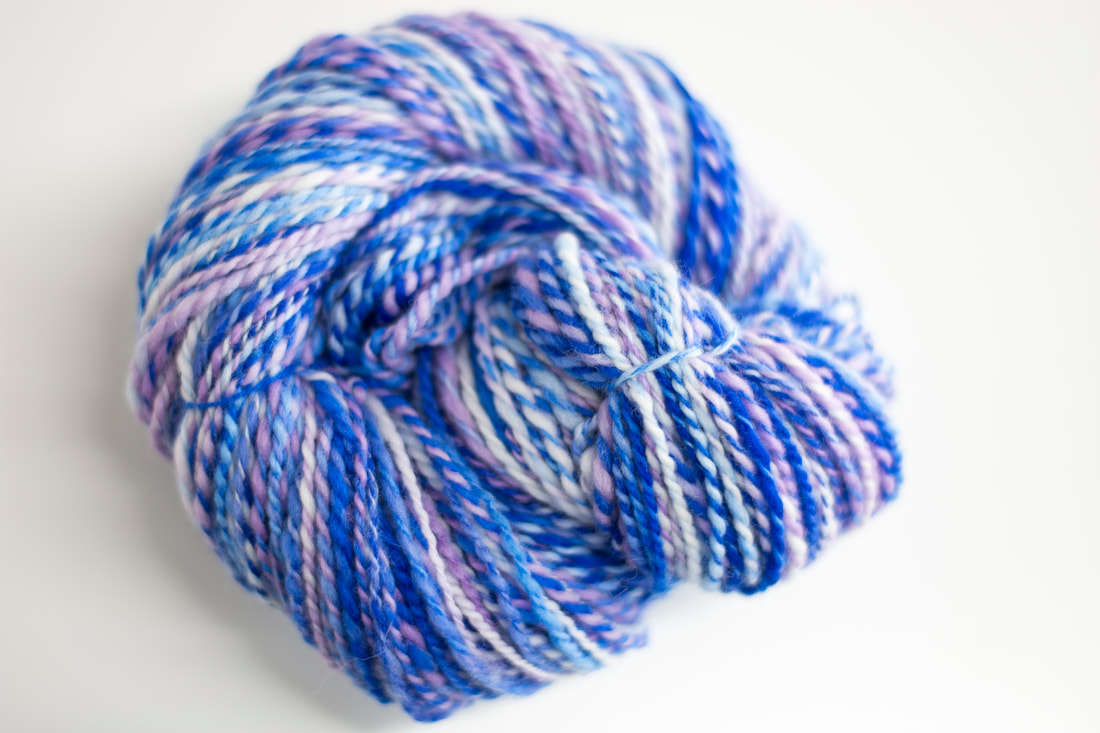
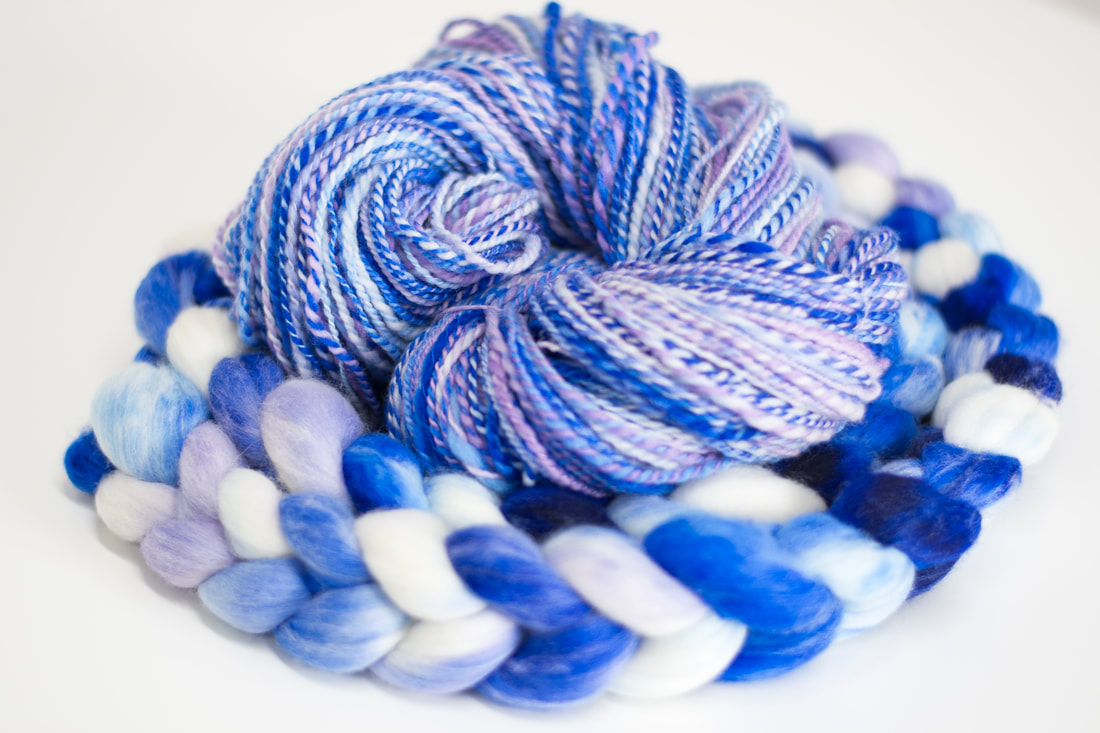
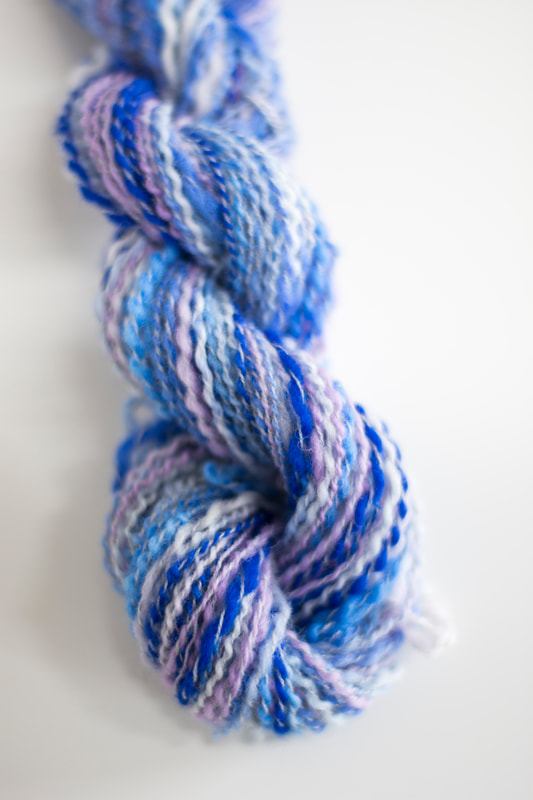
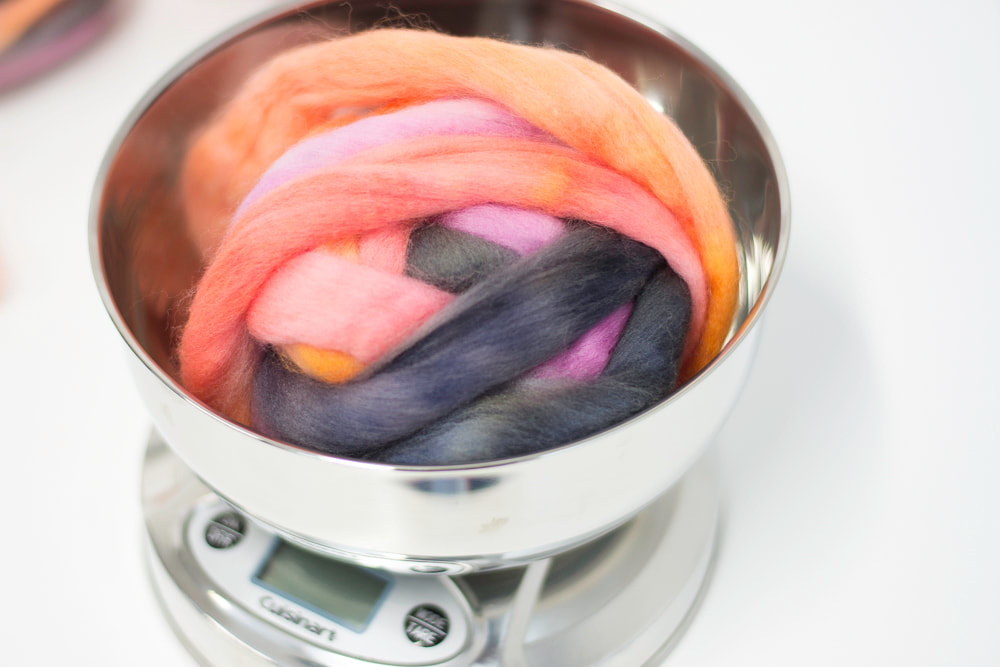
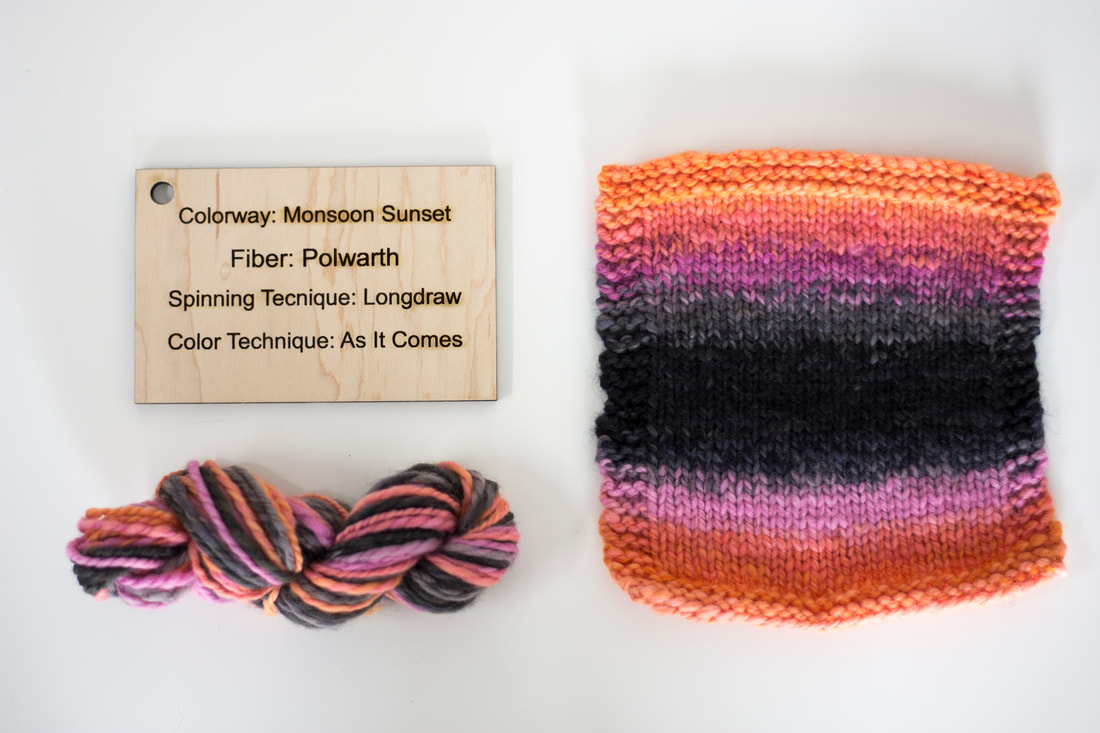
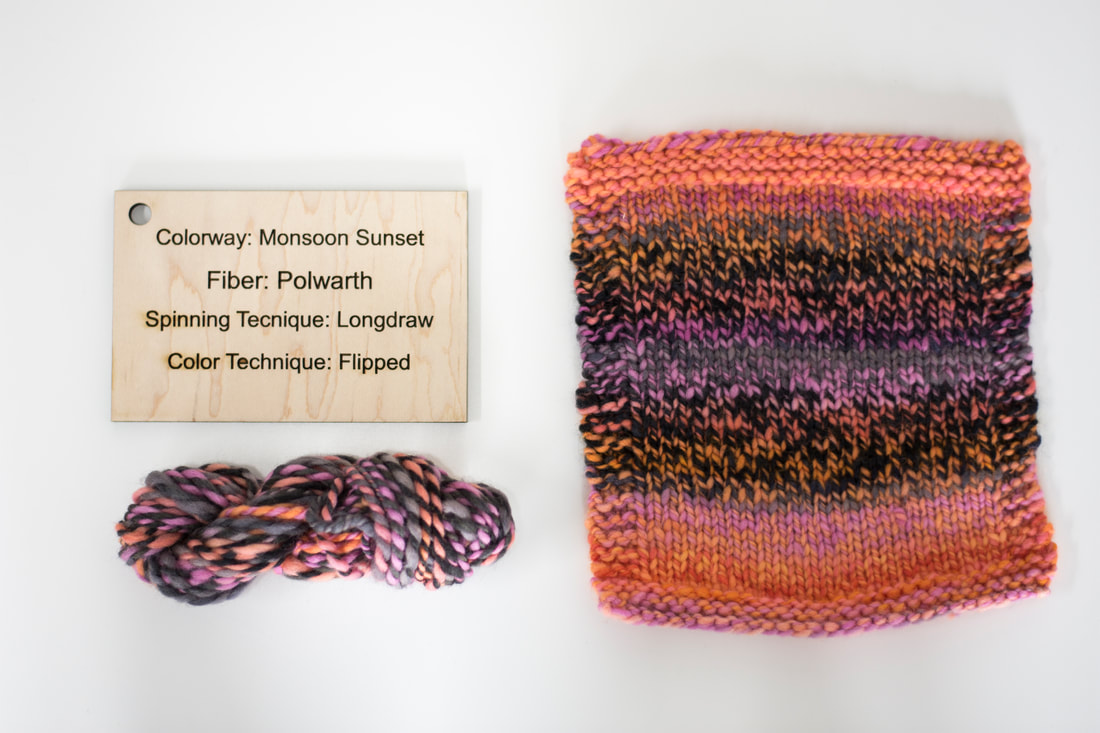
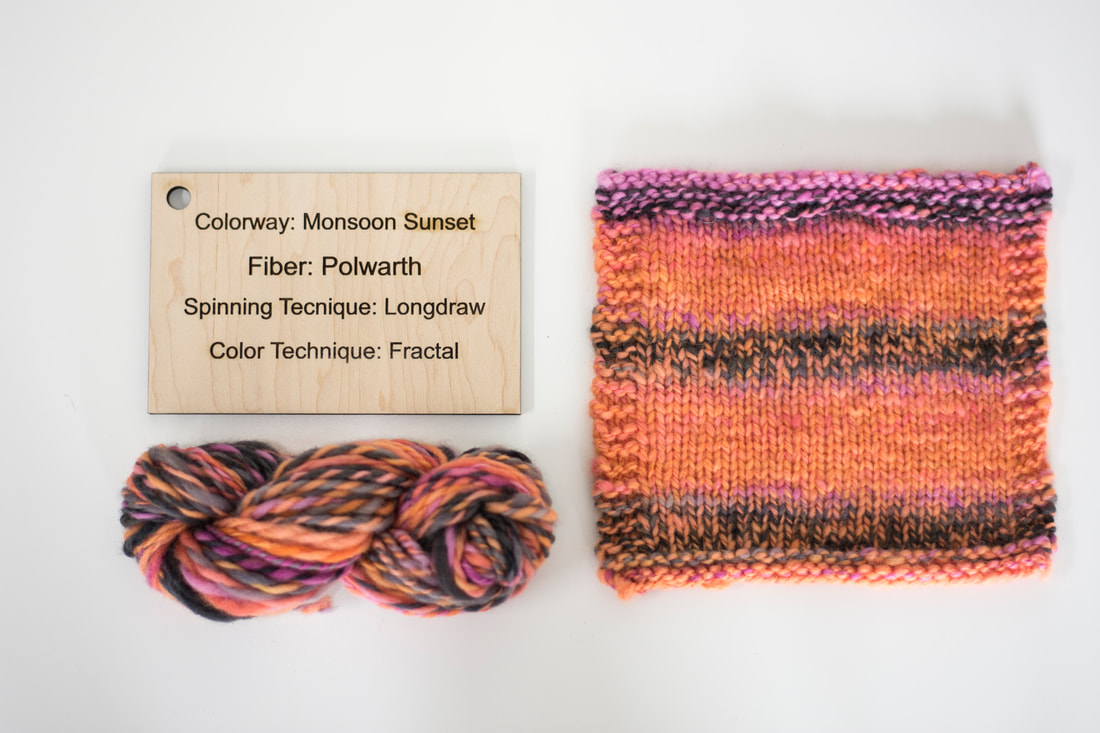

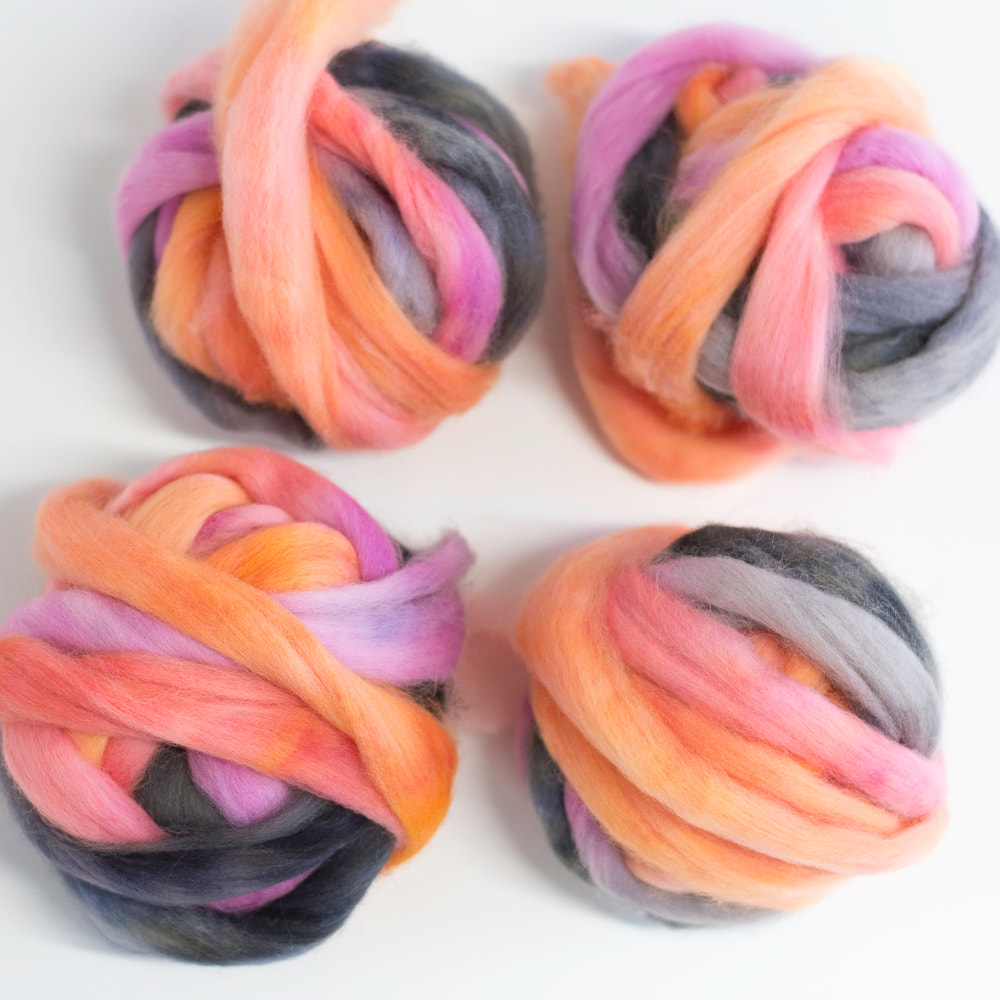
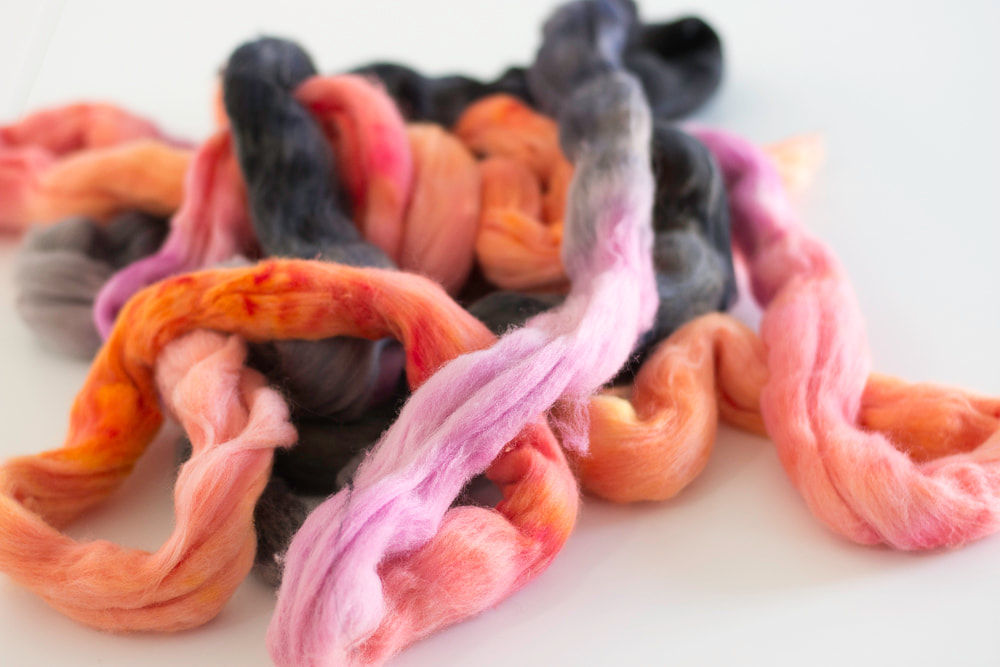
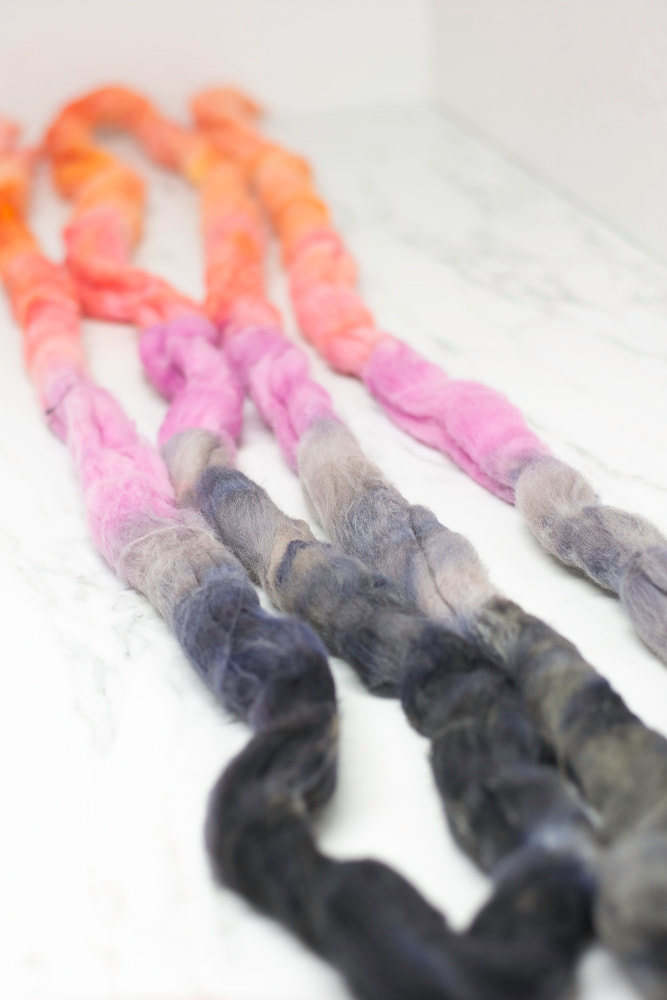
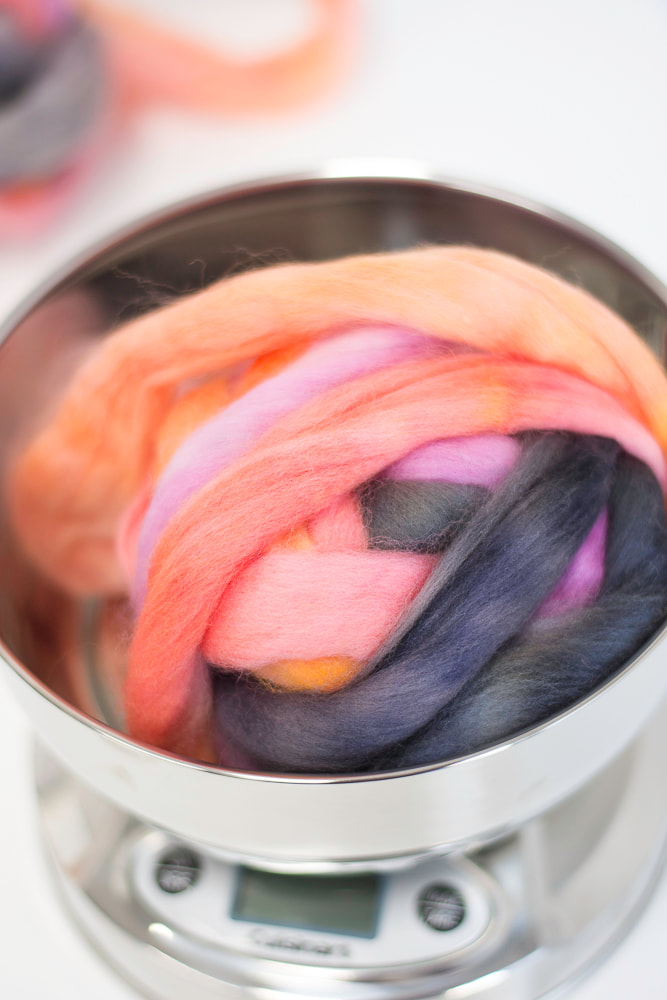
 RSS Feed
RSS Feed